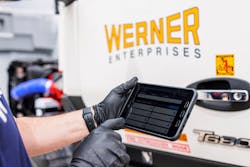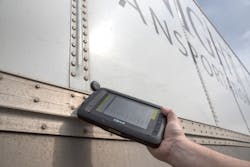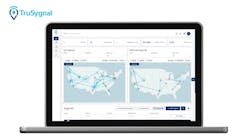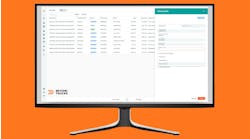For a truck driver waiting in a repair shop, every tick of the clock feels like a pin prick, bleeding money from what would otherwise have been a productive day. Drivers get paid by the mile; unfortunately, pacing back and forth in a waiting room doesn’t count.
It’s a maddening experience, according to Kevin Bowers, director of service operations at TranSource, a dealership that services Hino, Isuzu, Mack, and Volvo medium- and heavy-duty trucks.
“Every driver or every trucking company that drops their truck off to us, they’re mad when they get here,” Bowers told Fleet Maintenance, FleetOwner's sister publication. “They’re mad because the truck’s broke, they’re mad because they’re going to have to spend money to fix it, and they’re mad because they don’t have the truck to pull their load.”
The ramifications for the fleet are twofold: a truck not on the road is an unprofitable one and ticked-off drivers are as bad for business as downtime.
“Reliable equipment plays a big part in retention, and if a fleet is not addressing their needs in a timely manner, or supporting their drivers in every way possible, it’s more likely they’ll leave,” said Tristan Nolan, Werner Enterprises’ product manager for maintenance, equipment, terminal network, and technology platform.
That’s why fleets and maintenance providers must use every tool at their disposal to speed up what can be a very long repair process rife with potentially long part lead times and understaffed shops. And for the challenge of expediting the repair process, it appears that digital tools—powered not by pneumatics or electricity but by data—are providing the biggest help. These include all sorts of apps, platforms, and acronyms, from SRM (service relationship management) to CMMS (computer maintenance management systems). They may work in combination or alone, but they all have a knack for unlocking more efficiency and uptime than fleets ever had before.
High-level solutions
Werner Enterprises, which ranks No. 12 on the 2022 FleetOwner 500: For-Hire list, hangs on the cutting edge of the digital tool spectrum. One of the largest for-hire fleets in North America, the Omaha, Nebraska-based carrier developed its own telematics solution called Werner EDGE, which feeds data into the Werner Event Resolution System (ERS). Sixty road breakdown specialists use ERS to assist with issues ranging from preventive maintenance to major equipment failures. The team also deals with estimate reviews, invoices, and warranty filing via cloud-based ERS workflows. Nolan said Werner has cut driver dwell time by more than half and cut time per call to address vendor repair needs by 10 minutes since the inception of EDGE and ERS.
The logistics company manages 8,000 tractors, 24,000 trailers, and utilizes a network of 13,000 repair shops. Werner has also integrated with OEMs Daimler Truck North America and Navistar, as well as SRM provider Decisiv, to widen its reach and reduce time on the phone.
“With our integrations, phone calls are eliminated, drivers are served faster, and agents can address a higher volume of repair needs,” Nolan explained.
TranSource, meanwhile, has dealerships across North Carolina and South Dakota, with 130 bays spanning several facilities and 100 ASE- and OEM-certified technicians, who also service the dealer’s lease and rental fleet. TranSource solely uses Decisiv’s SRM.
This end-to-end software solution, which Volvo Group brands as the ASIST SRM, expedites estimates and approvals, and manages and streamlines the overall repair process. This starts with Driver Vehicle Inspection Report (DVIR) data, after which work orders are quickly created through the Karmak Fusion dealer management system (DMS). The necessary information, from diagnostic reports and estimates to warranty coverage and customers’ preferred inspection and service procedures, all funnel down to the technician making the repair. Basically, those who need to know will know.
“It helps me manage my business, because I can keep my eye on the ball out there and what’s going on,” said Bowers, who has used Decisiv for about two decades. “Anything problematic that happens out there, I’m involved in; I’m copied on all the case notes flying back and forth within service departments.”
Through Decisiv’s Builder app, TranSource has made nine custom inspection procedures totally paperless, including for lease/rental and used-truck turn-in, trailers, and maintenance programs.
This type of technology is no longer just for the larger companies, though. Smaller fleets and shops can also leverage these tools if they drop the pen and paper and connect to the cloud.
Inspection gadgets
For a dealer like TranSource, a service request is needed to start a job. This can be kicked off typically with a Department of Transportation pre-trip inspection or DVIR. The Federal Motor Carrier Safety Administration (FMCSA) requires this inspection at the end of each workday, with the report submitted to the fleet when reaching the home terminal. The compliance and safety measure is the first line of detection for defective equipment, ideally ensuring a fleet does not put a truck with underinflated tires or bad brakes on the road.
Using an electronic DVIR is the first step toward speeding up the repair process; Werner does this through the EDGE system.“Werner’s professional drivers conduct pre-trip and post-trip inspections every time they get in the truck or finish up a delivery,” Nolan said. “In addition, Werner Maintenance places a high emphasis on regular inspections by technicians.”
TranSource does not itself offer eDVIRs but integrates with many other telematics and fleet-management platforms that offer the tool, which can be accessed from a driver’s smart device.
Going paperless circumvents the “protracted” manual route, explained Richard Clark, product manager for Chevin FleetWave, a fleet-maintenance management provider. Before helping develop the latest iteration of the FleetWave platform, he was an avid user of the technology as a technician and later as a fleet manager at a large U.K.-based fleet.
“When I was training as an apprentice, the driver would fill in the paper document and have to walk across the massive yard to the transport office,” he recalled. From there, the shop was contacted, and a technician would have to grab the truck keys to bring it in.
FleetWave Forms, the platform’s eDVIR, alleviates this process. “If there is something wrong, the workshop gets a notification, and they can already go and pre-plan, pick parts, and be organized before the driver has even arrived,” Clark explained. “You realize how inefficient that way of working is compared to now, and the savings of time and improvement in efficiencies.”
Using a tablet or other smart device to check off inspection boxes also guides the driver through the process to ensure nothing is missed.“Typically, drivers have pencil-whipped,” relayed Fred Fakkema, VP of safety and compliance for Zonar Systems, a fleet management provider. “They just check the box—they don’t actually get out and walk around the vehicle to see what’s going on.”
Fakkema saw this often in his 25 years at the Washington State Patrol, where he also led the Commercial Vehicle Division. And even though the driver may miss a loose mudflap or broken marker light, the Commercial Vehicle Safety Alliance (CVSA) inspector won’t, and visible issues will likely initiate a more thorough, time-consuming 37-point inspection. The CVSA officer will put the truck out of service until the defects are fixed, and the driver will sit and wait. And not make any money.
Zonar developed the EVIR (electronic verified inspection reporting) system, which guides the driver to inspect specific zones by scanning RFID tags stuck to the truck.
“If there’s a defect, once the driver does the complete walkaround and docks the tablet, [the data] immediately go to the back office for the mechanics to see,” Fakkema explained. “They can take a picture and attach it to the EVIR, and now there’s no confusion of what that defect is or what needs to be replaced.”
The configurable EVIR has been used for OTR trucks, buses, forklifts, and even a roller coaster, Fakkema said.
Expect the shop to be a little busier at first because new users’ defect reports show “hockey stick” growth, as drivers are catching defects that were previously overlooked. “That levels out to a normal plane once fleets get used to it,” Fakkema said.
The office angle
Before discussing how digital tools help the technician, let’s take a side trip to the back office. The data these tools generate allow managers far greater transparency into the operation, which can help with everything from scheduling PMs to planning maintenance budgets.
Transparency was the main draw for Robert Francis, fleet manager at Prudential Overall Supply, to adopt Fleetio. Prudential delivers everything from uniforms and towels to pharmaceuticals across the country, using hundreds of step vans, about 80 box trucks, and 20 Class 8 tractors.
Prior to deploying the platform, Prudential used an “antiquated system that was built for building maintenance,” Francis said. Only the technicians and administrators in the fleet department had access.“The general managers had no clue what was going on—they had no visibility to the expenses for the fleet, or when their services were due,” Francis said. “They were in the blind unless we sent them an email saying these trucks are coming up for service,” Francis continued.
Now they do have that visibility into budgets, fuel costs, maintenance costs, and truck status, though without the ability to edit work orders or vehicle information, he added.
Technicians can also alert managers at the facilities when any of their vehicles are due for PMs, so they can ensure a spare truck is ready to take its place. Francis said managers can get an overview of how many trucks are due or overdue for service. The platform also helps locate mobile maintenance providers when needed, and though they can’t schedule mobile services like they can with in-house services, an auto-integrate feature pays out vendors quicker. Overall, there is far less paperwork, which Francis related is “the difference between writing an essay paper and doing a one-pager.”
“This access completely changed the way our general managers look at their fleet,” Francis said. “Our local GMs are all over the country, and [Fleetio provides] the ease of use to give them one dashboard to where they can see the health of their fleet.”
To get buy-in from the top brass for digital tools, Francis advised to key-in on the specific time savings.
Fleetio Product Manager Michael Harrison said digitizing the electronic approval process can save “hours and hours of time” for both the shop and the fleet.
“Instead of having to play a game of phone tag between multiple parties to get individual line items approved, that can all happen electronically, using auto approvals in some cases based on logic the fleets can build,” he said.
This allows everyone from the driver to the technician to become involved in the maintenance lifecycle.
This article originally appeared in its entirety on Fleet Maintenance, FleetOwner's sister publication and part of the Endeavor Commercial Vehicle Group.







